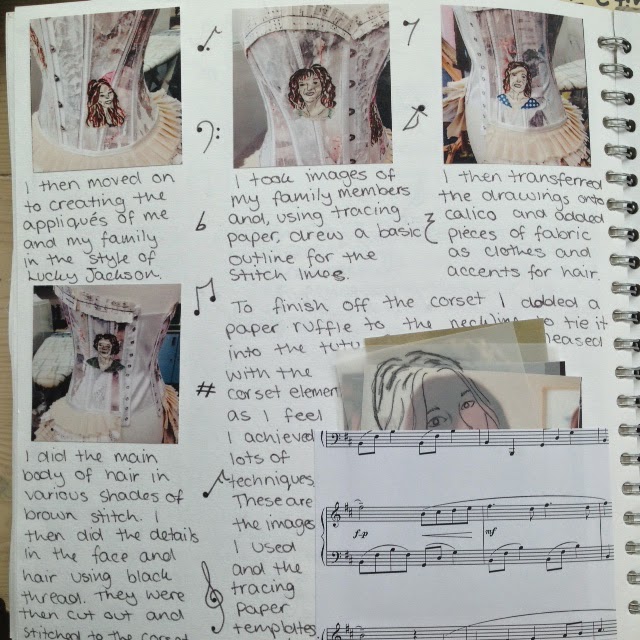The tutu and corset make up my final piece. It is based on
the theme of dancing, shown through the type of garment, the sheet music used, the
imagery panels on the corset and the four appliqués of Swan Lake inspired
images. I am really pleased with my outcome as I feel I have successfully created
a full, useable garment, presenting many techniques, along with creativity and
deeper meaning. Having a theme of dancing on my final piece shows the
importance of it in my life, and how it has affected my own personal story.
I think I have taken a journey with this project, from my
initial research into Claudine Hellmuth and Tracie Murchison, through to the
development and creation of my final piece. I feel that all the artists I have
researched have affected my decisions throughout this creative process,
inspiring me and guiding me onto the next stage. If I were to redo it I may have taken
it down another route, possibly focusing on the family holiday theme with beach
huts rather than the dancing theme. I think that either way my final outcome
would have been a garment however; as I feel my strengths lie more in stitch-based
work, rather than painting or drawing, although I have shown the ability for
both sides within this project.
Looking at Jennifer Collier was a turning point in my
project. Her work with ballet shoes helped me to grasp the opportunity to
include my love of dancing into the development. I enjoyed working with the
teabags as another medium, and the ballet shoes sparked my interest in creating
a tangible, wearable item rather than a 2D piece.
Overall, this project, to me, was a success. I am pleased
with all the outcomes that I have created and feel that my sketchbook fully
documents the journey I took during the creation process behind these outcomes.
I feel that this project tells my own personal visual story.

















